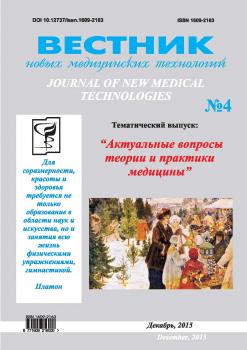The purpose of this study was the choice of classification for objective assessment of the severity of traumatic injuries of the pancreas on the basis of a comparative analysis of the immediate results of surgical treatment. A new variant of the classification of severity traumatic injuries of the pancreas was proposed. Comparative analysis of classifications D. Smego et al. (1985) and A.K. Eramishanсev et al. (1994) with the proposed option stratification affected by severity of damage was carried out. The study is based as a retrospective analysis of 202 patients with the treatment of traumatic injuries of the pancreas, made during the period from 1990 to 2006. For each of the classifications of all the patients were divided into 4 groups depending on the severity of the damage and determined the number and severity of specific postoperative complications, mortality, and length of hospital stay of discharged patients. Directly propor-tional to a statistically significant dependence of the increase in the number of unfavorable outcomes of treatment and duration of hospital stay with increased severity of damage to the pancreas when using the proposed classification author’s scheme was revealed. Other classifications were not statistically significant differences in complications and mortality in groups of patients with different degrees of severity of injury to the pancreas.
traumatic injuries, pancreas, classification, severity of damage
1. Grigor´ev E.G., Rasulov R.I., Makhutov V.N. Khirurgiya izolirovannykh i sochetannykh povrezhdeniy podzheludochnoy zhelezy. Novosibirsk: Nauka, 2010. 152 s.
2. Lang T.A., Sesik M. Kak opisyvat´ statistiku v meditsine. Rukovodstvo dlya avtorov, redaktorov i retsenzentov; per. c angl. pod red. V.P. Leonova. Moskva: Prakticheskaya Meditsina, 2011. 480 s.
3. Vinnik Yu.S., Rogov M.G., Cherdantsev D.V., Pervova O.V. Rezul´taty khirurgicheskogo lecheniya postradavshikh s travmoy podzheludochnoy zhelezy. Meditsinskaya entsiklopediya. Medinfa. Rezhim dostupa: http://medinfa.ru/article/106/116744 opubl. 24.01.2005
4. Makhnev A.V., Shneyder V.E., Strelin S.A., Musin V.M., Sozonov A.I. Taktika khirurgicheskogo lecheniya bol´nykh s travmoy podzheludochnoy zhelezy. Meditsinskaya nauka i obrazovanie Urala. 2006. T.7. №5. S.69-70.
5. Shneyder V.E., Makhnev A.V. Opredelenie stepeni tyazhesti travmaticheskikh povrezhdeniy podzheludochnoy zhelezy. Sb. nauch. Tr. VII mezhregion. konf., posvyashchennoy pamyati akad. RAMN, prof. L.V. Poluektova «Aktual´nye problemy khirurgii». Omsk: izd-vo OmGMA, 2013. S. 198-205.
6. Dindo D., Demartines N., Clavien P.-A. Classi-fication of Surgical Complications. A New Proposal With Evaluation in a Cohort of 6336 Patients and Results of a Survey. Ann.Surg. 2004. V.240. P.205-213.
7. Hwang S.Y., Choi Y.C. Prognostic Determinants in Patients with Traumatic Pancreatic Injuries. J. Korean Med. Sci. 2008. № 23. R.126-130.
8. Kashuk J.L., Burch J.M. Duodenum and pan-creas; In: Feliciano DV, Mattox KL, Moore ME, editors. Trauma. New York: McGraw-Hill Companies, 2008. P. 702-721.
9. Khan M.A. Cameron I. The management of pancreatic trauma . J.R.Army Med.Corps. 2010. V.156. N4. P. 221-227.
10. Krige J.E.J., Thomson S.R. Operative strategies in pancreatic trauma - keep it safe and simple. S.Afr.J.Surg. 2011. V.49. N3. P.106-109.
11. Tan K.K. Management of Pancreatic Injuries af-ter Blunt Abdominal Trauma. Experience at a Single Institution. JOP. 2009. V.10. N.6. P.657-663.
12. Pancreatic injury in 284 patients with severe abdominal trauma: outcome, course, and treatment algorithm / Heuer M. [et al.]. Langenbecks Arch.Surg. 2011. №7. R. 1067-1076.
13. Prognosis and treatment of pancreaticoduo-denal traumatic injuries: which factors are predictors of outcome? / Antonacci N. [et al.]. J. Hepatobiliary Panc.Sci. 2011. V.18. №2. R. 195-201.
14. Silveira H.J.V., Mantovani M., Fraga G.P. Trauma do pâncreas: fatores preditivos de morbidade e mortalidade relacionados a índices de trauma. Arq. Gastroenterol. 2009. V.46. № 4. P. 270-278.





